Tourism
15 Best Places to Visit in Skardu
Published
3 years agoon

Discover the best places to visit in Skardu, Pakistan. Learn about the stunning landscapes, cultural experiences, and tips on how to make the most of your journey and places to visit in Skardu.
Skardu, located in the Gilgit-Baltistan region of Pakistan, is a remote mountain paradise that offers breathtaking landscapes, unique cultural experiences, and a chance to escape the city life’s hustle and bustle. Surrounded by snow-capped mountains, crystal-clear lakes, and lush green valleys, Skardu is a haven for travelers seeking solitude and adventure.
In this travel blog, we will explore this stunning region’s hidden treasures and provide tips on how to make the most of your journey during your visit to Skardu famous places. Skardu has now become synonymous with Baltistan, representing the whole region.
Getting to Skardu
Skardu is accessible by road and air. The Skardu Airport has direct flights from Islamabad. And from Lahore, Karachi, and other cities during summer. Alternatively, you can travel by road from Rawalpindi/Islamabad, which takes around 16-20 hours. The scenic road trip offers stunning views of the mountains and valleys.
Top 15 Places to visit in Skardu
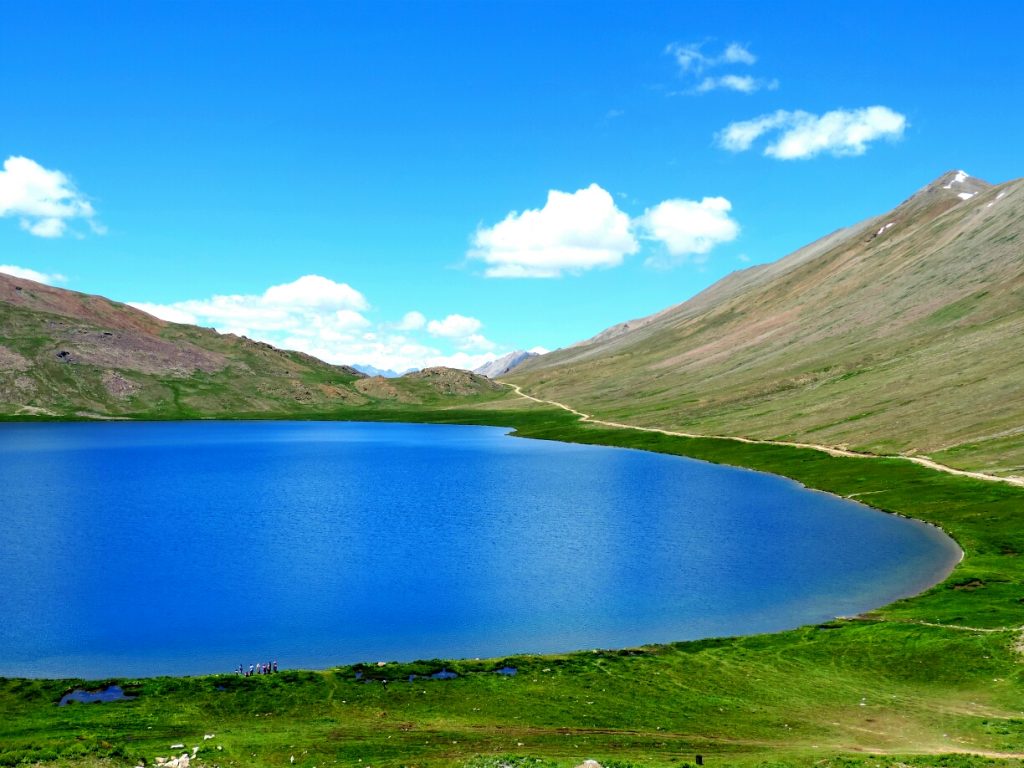
1. Deosai National Park
Deosai National Park is a breathtakingly beautiful and serene destination situated in the Skardu and Astore districts of Gilgit-Baltistan. Spread over 3,000 square kilometers, it is one of the second-highest plateaus in the world and is often referred to as the “Roof of the World”. The park is home to diverse flora and fauna, including the Himalayan brown bear, snow leopard, and ibex.
Apart from the wildlife, Deosai is also known for its stunning landscapes and panoramic views. The park is also dotted with several freshwater lakes, including the Sheosar Lake, Pakistan’s highest lake. The best time to visit Deosai is during the summer when the weather is pleasant and the wildflowers are in full bloom, painting the entire plateau with vibrant colors. Deosai National Park is a must place to visit Skardu destination for nature enthusiasts and adventure seekers.

2. Shangrilla and Upper Kachura Lake
Nestled in the heart of the Karakoram Mountain range lies the picturesque resort of Shangrilla, one of the most famous places in Skardu, also known as “Heaven on Earth.” The resort’s stunning natural beauty is breathtaking, with majestic mountains, lush green forests, and a crystal-clear lake. Shangrilla truly lives up to its name and is a must-visit destination for anyone seeking to reconnect with nature.
Just a short drive from Shangrilla lies the Upper Kachura Lake, a stunningly beautiful lake that is the region’s hidden gem. Towering mountains surround the lake and offer a peaceful retreat for visitors looking to escape the crowds. Visitors can take a boat ride on the lake, go fishing, or relax on the lake’s shore and take in the beauty of their surroundings. The lake is also home to various bird species, making it a popular spot for birdwatchers. Upper Kachura Lake is a truly magical place that showcases the region’s natural beauty and is a must-visit for anyone traveling to Shangrilla.
3. K2 Base Camp
K2, the second-highest mountain in the world, is a breathtaking destination that attracts adventurers and nature enthusiasts worldwide. The K2 base camp trek is a challenging yet rewarding journey that takes you through some of the most spectacular landscapes in the world. For adventurers, it is the best place to visit in Skardu. As you hike through rugged terrain and climb steep passes, you’ll be rewarded with stunning views of snow-capped peaks, glacial lakes, and deep valleys.
The K2 base camp trek is not for the faint of heart, but for those willing to take on the challenge, it’s an experience of a lifetime. Along the way, you’ll have the opportunity to meet friendly locals, experience the region’s unique culture, and camp under the stars in some of the most beautiful places on Earth. Whether you’re an experienced hiker or just starting, the K2 base camp trek is a must-do for anyone looking for an unforgettable adventure in one of the world’s most spectacular destinations.
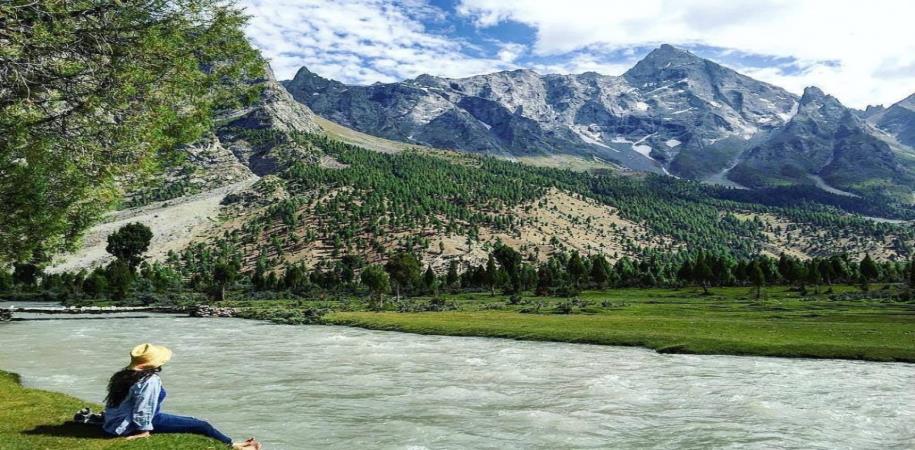
4. Basho Meadow
Basho Meadow in Skardu is truly a paradise on Earth. Surrounded by breathtaking views of towering mountains, lush green meadows, and crystal-clear streams, this meadow is a perfect destination for nature lovers. The scenery is simply stunning, and the fresh air will leave you rejuvenated. You can trek around the meadow, explore the nearby forests, or sit and soak in the natural beauty.
The meadow is also home to various flora and fauna, including wildflowers and butterflies. The meadow is carpeted with colorful flowers during the spring and summer, making it a sight to behold. The best time to visit Basho Meadow is from May to September, when the weather is mild, and the sky is clear. If you’re looking for a place to escape the city life’s hustle and bustle, Basho Meadow should be on your list of must-visit destinations.

5. Sarfaranga Cold Desert
Sarfaranga Cold Desert, located in the Shigar district of Gilgit-Baltistan, is a truly mesmerizing travel destination. The vast expanse of the cold desert, surrounded by towering mountains, offers breathtaking views that will leave you spellbound. In shades of orange and brown, the dunes create a dramatic contrast against the snow-capped peaks, making for a stunning sight.
Visitors can also engage in various activities, including dune bashing, quad biking, and horse riding. The serene atmosphere, stunning scenery, and thrilling activities make Sarfaranga Cold Desert a must-visit destination for any travel enthusiast who is traveling to Skardu.
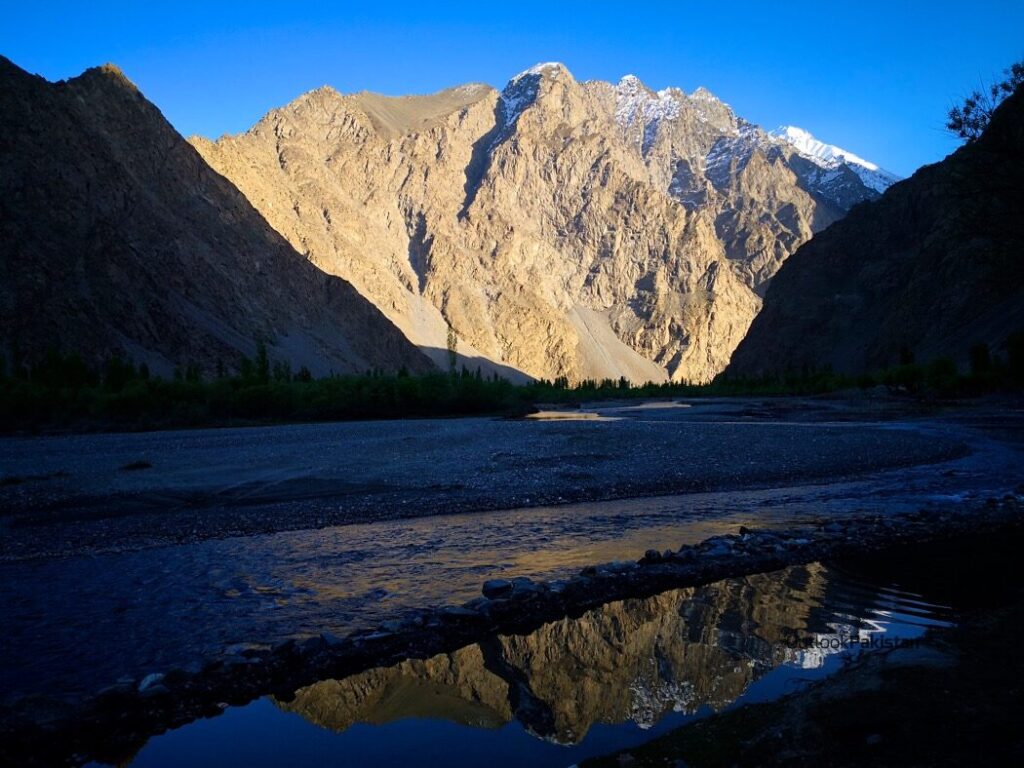
6. Soq Valley, Skardu
The Soq Valley is a hidden gem in Pakistan’s northern region. Surrounded by majestic mountains, the valley offers breathtaking views and a serene atmosphere for travelers seeking an escape from the hustle and bustle of city life. The valley is located in the Upper Kachura region, just a twenty-minute drive on bumpy road from the town. Visitors can also enjoy local cuisine and trout fish at the valley. Overall, the Soq Valley Kachura is a must-visit destination for anyone looking to experience the beauty and tranquility of northern Pakistan also known as one of the best places in Skardu.
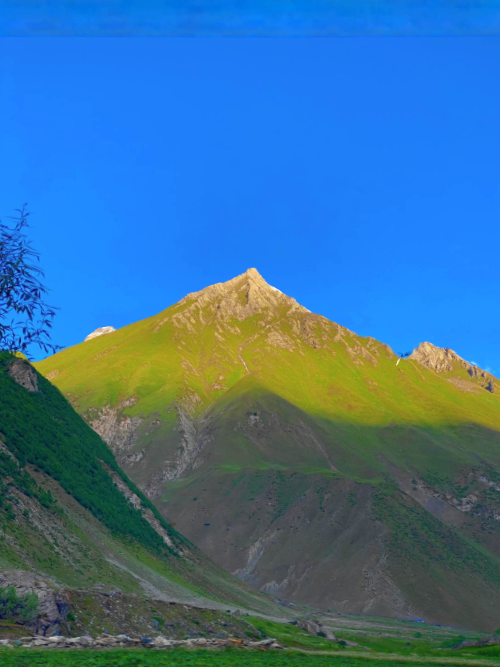
7. Tormik Meadow
Tormik Meadow is a beautiful travel destination in Pakistan’s northern region. This stunning meadow is situated at an elevation of 3,700 meters above sea level, surrounded by towering mountains and lush greenery. The area is known for its breathtaking views of the Himalayas and the Karakoram range, which makes it a popular spot for trekking enthusiasts.
Visitors to Tormik Meadow can enjoy various outdoor activities such as hiking, camping, and photography. The meadow is accessible via a steep, winding road providing an exciting journey through the mountains. Upon arrival, visitors are greeted with stunning panoramic views of the surrounding landscape, which are awe-inspiring. That’s why it is in the Best places to visit in Skardu list.
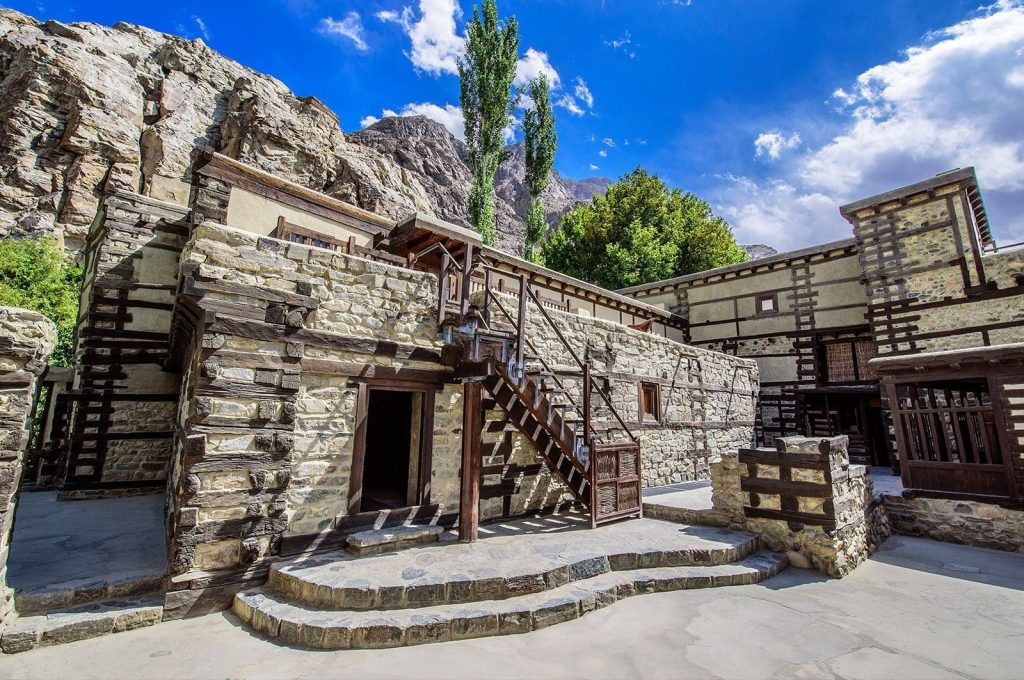
8. Shigar Fort
Shigar Fort, also known as Fong-Khar, is a magnificent 17th-century fort in the town of Shigar in Gilgit-Baltistan. This beautiful fort is a unique blend of Tibetan and Balti architecture and has been beautifully restored to its former glory. It is a must place to visit in Skardu for anyone interested in history, culture, and architecture.
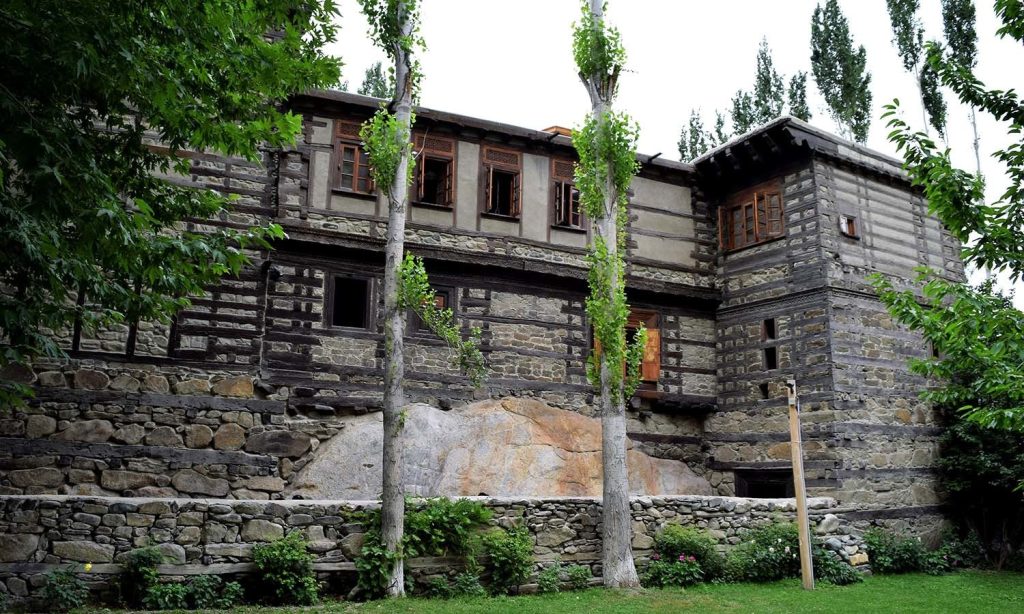
The fort has been converted into a hotel that offers a unique opportunity to experience the royal lifestyle of the Balti rulers. The rooms are decorated with traditional Balti furnishings, and the hotel offers a range of activities such as trekking, mountain biking, and fishing in the nearby rivers. The fort also has a museum that houses a collection of artifacts that provide a glimpse into the rich history and culture of the region, which is why it is the top place to visit in Skardu
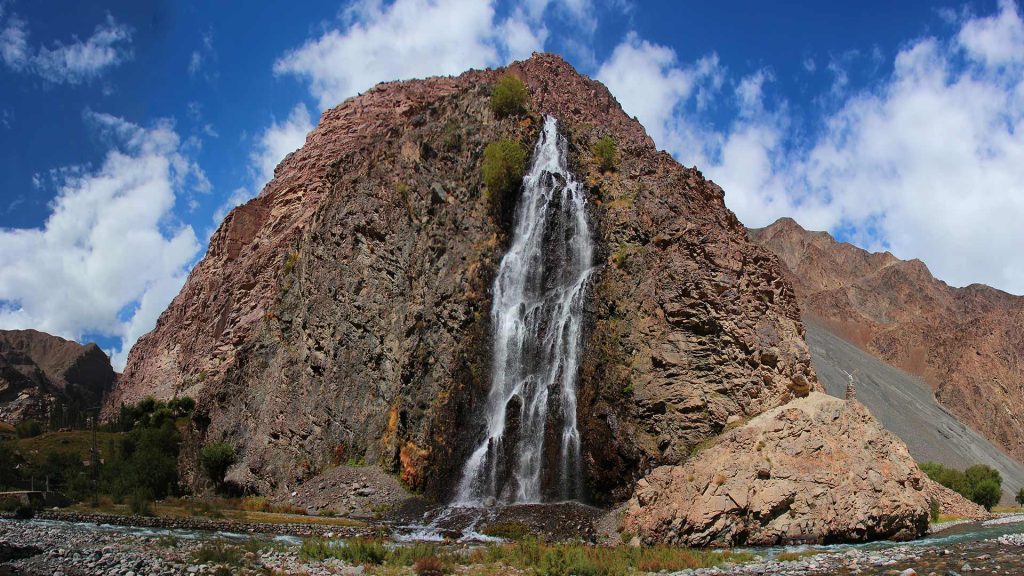
9. Mantokha Waterfall
Mantokha waterfall in Kharmang district of Gilgit-Baltistan is a breathtaking natural wonder that are a must-visit for adventure seekers and nature enthusiasts. Mantokha waterfall is in a narrow gorge surrounded by towering mountains covered in lush greenery. The sound of the waterfall echoing off the gorge’s walls creates a soothing melody that is both calming and awe-inspiring. The crystal-clear water cascades down the rocks and mixes with the stream. The surrounding landscape is also ideal for hiking and picnicking, making it an ideal spot for a day trip.
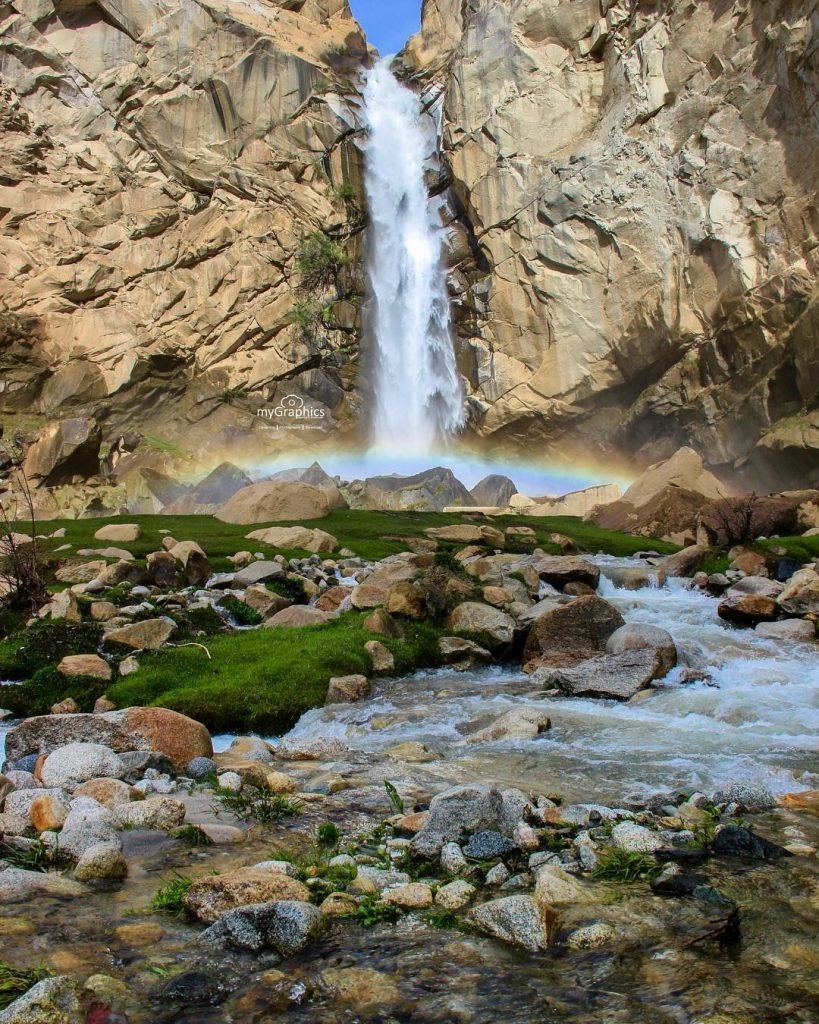
10. Khamush Waterfall
Khamush waterfall, on the other hand, is a relatively lesser-known destination hidden away in a remote Kharmang valley. The cascading waterfalls surrounded by towering mountains create a serene atmosphere perfect for those looking to escape the hustle and bustle of city life. The journey to the waterfall is also a treat, with the lush green valleys and glistening streams providing a scenic backdrop. Overall, both Mantokha and Khamush waterfalls are a must-visit for anyone looking to experience the natural beauty of Pakistan.
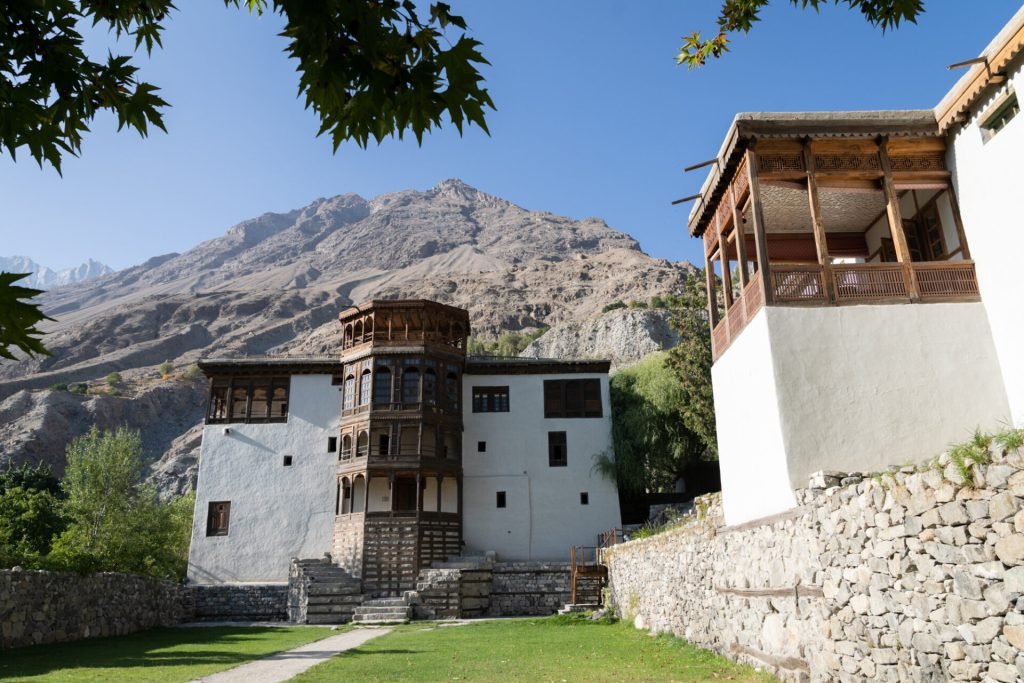
11. Khaplu Palace
Khaplu Palace is a beautiful historical monument in Pakistan’s Gilgit-Baltistan region. The palace dates back to the mid-19th century and served as the residence of the local royal family. Today, the palace has been converted into a hotel that offers a unique blend of historic charm and modern amenities. The palace’s architecture is a testament to the region’s rich cultural heritage, with intricate woodwork and carvings adorning its walls and ceilings. The majestic Karakoram Mountain range surrounds the palace, and the view from the palace is simply breathtaking.
Visiting Khaplu Palace is an unforgettable experience that glimpses into Gilgit-Baltistan’s rich history and culture. The palace’s luxurious accommodations and stunning surroundings make it the perfect place for a peaceful and relaxing getaway. Whether you’re interested in exploring the local area or want to relax and soak up the beauty of your surroundings, Khaplu Palace is an ideal destination and the best place to visit in Skardu. With its fascinating history, stunning architecture, and breathtaking views, this palace is a must-visit for anyone traveling to the region.
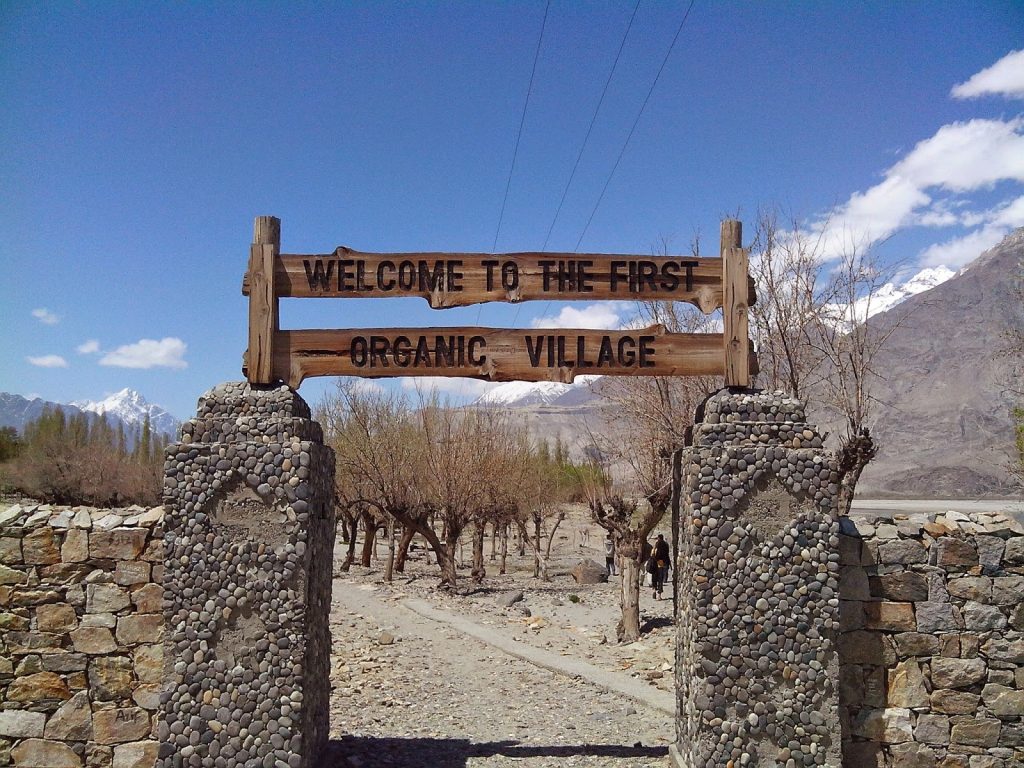
12. Organic Village, Skardu
Organic Village Skardu is a hidden gem in the heart of Pakistan’s northern areas. This serene and picturesque village offers visitors a unique opportunity to experience life in an organic village, where every aspect of daily life revolves around sustainability and self-sufficiency. The village is surrounded by snow-capped mountains and lush green fields, making it an ideal destination for nature lovers and adventurers.
Visitors to Organic Village Skardu can enjoy the local culture and organic cuisines. The villagers are warm and hospitable, and visitors are always welcomed with open arms. One of the highlights of a visit to Organic Village Skardu is the chance to sample the delicious organic produce grown on-site, including fresh fruits, vegetables, and dairy products. Overall, a visit to Organic Village Skardu is an unforgettable experience that offers a unique glimpse into a way of life that is both sustainable and in harmony with nature. That is why it is the best place in Skardu to visit for nature lovers.
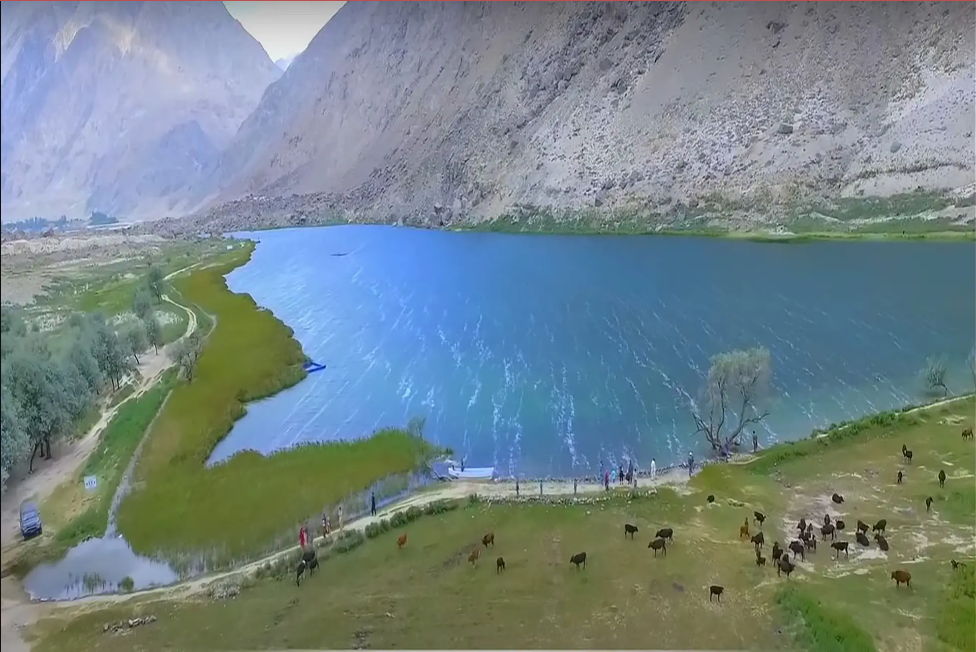
13. The Blind Lake
The serene lake is nestled in a valley surrounded by snow-capped peaks, making it a picturesque destination for adventure seekers and nature lovers. A must place to visit in Skardu. The journey to the lake is quite an adventure, as the road leading up to it is narrow and winding, offering breathtaking views of the surrounding mountains. Once you reach the lake, you can relax and soak in the beauty of the place or take a hike along the rugged terrain to explore the area further. Camping by the lake under the stars is an unforgettable experience that will leave you with memories to last a lifetime.
One of the most striking features of Blind Lake Shigar is its crystal-clear water, which reflects the surrounding mountains and sky, creating a mesmerizing panorama. The lake is also home to various fish species, making it a popular spot for fishing enthusiasts.
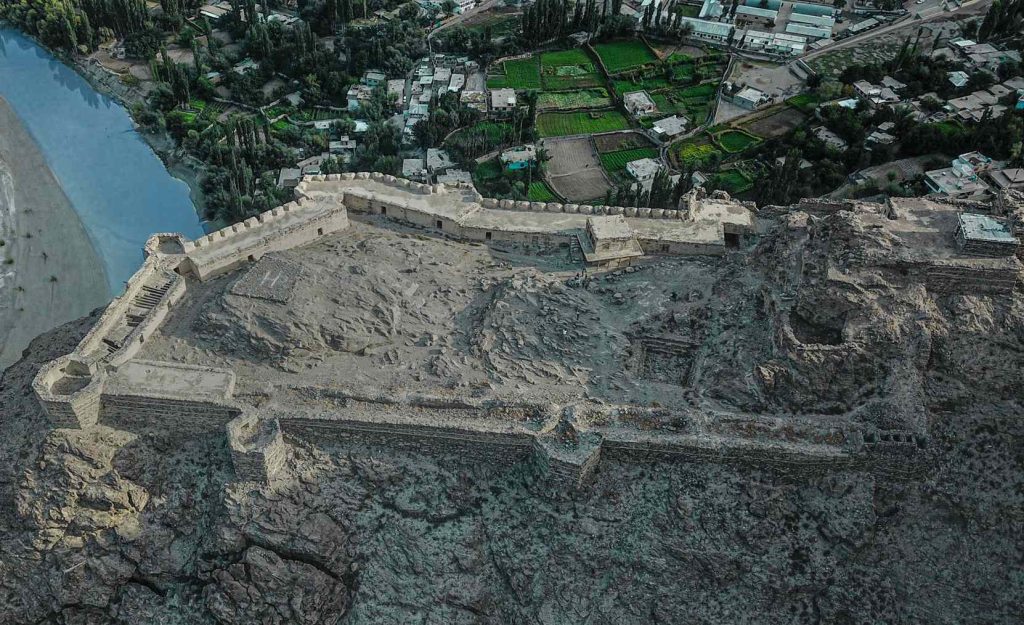
14. Kharphocho Fort, Skardu
Kharphocho Fort, located in Skardu, is one of the best places to visit in Skardu is a historical landmark and a must-visit destination for those interested in the region’s rich cultural heritage. The fort stands tall on a cliff overlooking the Skardu town and the Indus River, offering a breathtaking view of the surrounding landscape. The fort was built in the 16th century by Ali Sher Khan Anchan, the ruler of Skardu, and has since served as a strategic location for various rulers and armies. The fort was restored recently and now offers visitors a glimpse into the region’s history and architecture.
Visitors can explore the fort’s various chambers, halls, and watchtowers and learn about its rich history and cultural significance. The fort also offers a stunning panoramic view of the surrounding mountains and Skardu Valley, making it an ideal spot for photography enthusiasts.
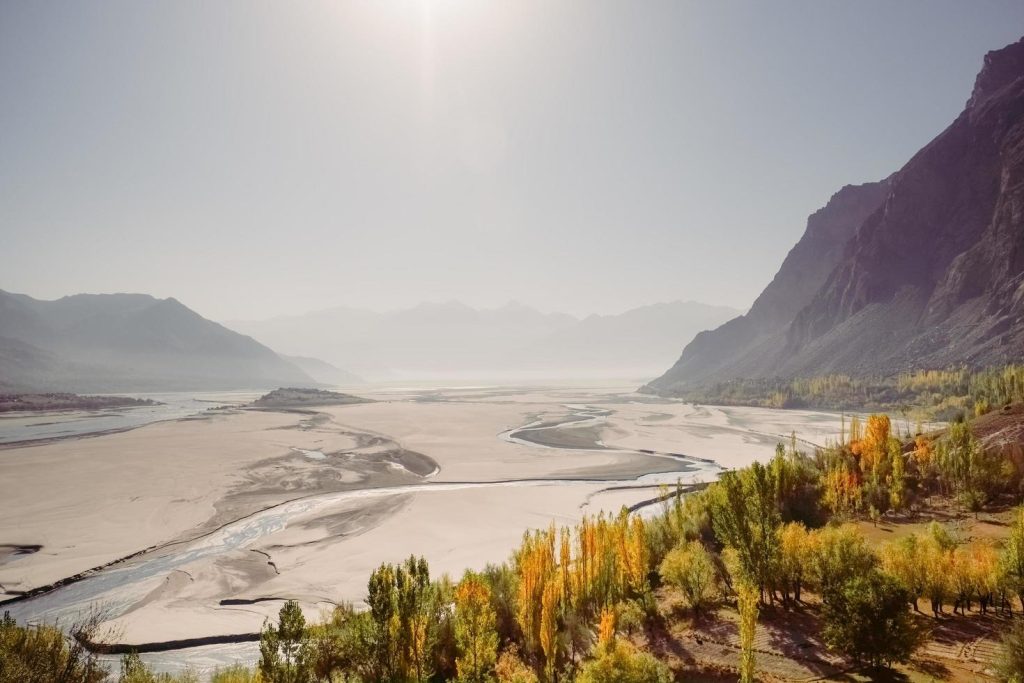
15. Katpana Desert
Katpana Desert, located in the picturesque region of Skardu in Gilgit Baltistan, is a must-visit places to visit in Skardu for every traveler. This breathtaking desert uniquely blends barren dunes, rugged mountains, and clear blue skies. The best time to visit Katpana is between May and October when the weather is pleasant and the skies are clear. The local culture is warm and welcoming, and visitors can indulge in traditional Pakistani cuisine and enjoy the hospitality of the locals. The serene silence of the desert, the stunning sunsets, and the starry night sky will leave you mesmerized and make your trip a truly unforgettable experience.
Cultural Experiences in Skardu:
Skardu is home to the Balti people with a rich cultural heritage. You can experience the local culture by visiting the local bazaars, trying local food, and participating in traditional festivals.
Balti Culture:
The Balti people have a unique culture and language. You can learn about their culture by visiting the local villages and interacting with the locals. You can shop Balti traditional things from local bazaars, including traditional dresses, caps, and jewellery items.
Must try Local Food, Balti Cuisine while visiting Skardu:
The Balti cuisine is a fusion of Tibetan and Pakistani flavours. You can try local dishes such as Keser (similar to paratha), Mamtu (steamed dumplings), Balay (noodle soup), Plapu (Balti Pasta made of wheat and walnut paste), and Khurba Skardu bread (a type of bread baked in a traditional oven). Don’t forget to taste local Namkeen Chai. You can also try local fruits such as cherries, apples, and various apricots.
Tips for Traveling to Skardu:
Best Time to Visit Skardu:
The best time to visit Skardu is from May to September, as the weather is pleasant and the roads are accessible. During the winter, the roads may be closed due to heavy snowfall, so it is best to avoid travelling. If you want to enjoy the Autumn colours, mid-October to November is the perfect time. If you are fond of spring, March and April is the best time to witness blossom’s beauty, such as the eye-captivating cherry blossom.
Packing List for Skardu:
When traveling to Skardu, it is important to pack warm clothes, as the weather can be cold, especially at night. You should also bring comfortable walking shoes, sunscreen, and sunblock, as the sun is quite intense in Skardu due to its height.
Safety Tips for Skardu:
Skardu is a safe place to travel, but it is always important to take precautions. You should carry a first-aid kit, stay hydrated, and avoid eating and drinking dirty stuff. It is also essential to respect the local culture and customs to enjoy the hospitality of the locals.
From the best places to visit in Skaredu to cultural experiences and safety tips, Skardu has something for every traveler. So, pack your bags, and prepare for the adventure of a lifetime!
About Author
Wazir Zafar Hassan
The writer is a graduate student of International Relations and writes on various political, tourism, climate change, and other social issues. He can be reached at zafarhasan527@gmail.com.
You may like
-
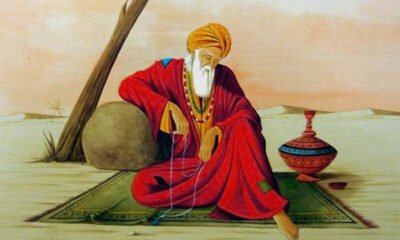

Rumi, the Moral Psychologist
-


Poor Winter Maintenance of KKH Risks CPEC All-Weather Trade
-
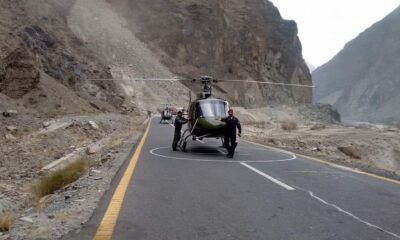

Pakistan Army Launches Rescue Operation, Missing Passengers in Deosai Found Safe
-


PM Shehbaz Sharif Visits Gilgit-Baltistan, Honors Martyrs, and Launches Development Projects
-
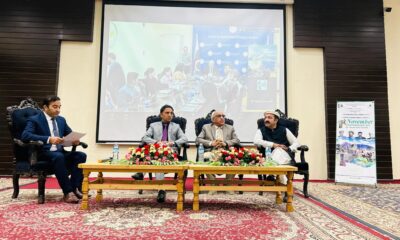

CISS-KIU Seminar: A Tribute to Gilgit-Baltistan’s Freedom Fighters of 1947
-


Gilgit-Baltistan Marks 77th Liberation Day from Dogra Rule
Arts, Culture & Heritage
Exploring Baltit Fort: A Jewel of Hunza Valley
Published
1 year agoon
October 10, 2024By
Zeeshan Alam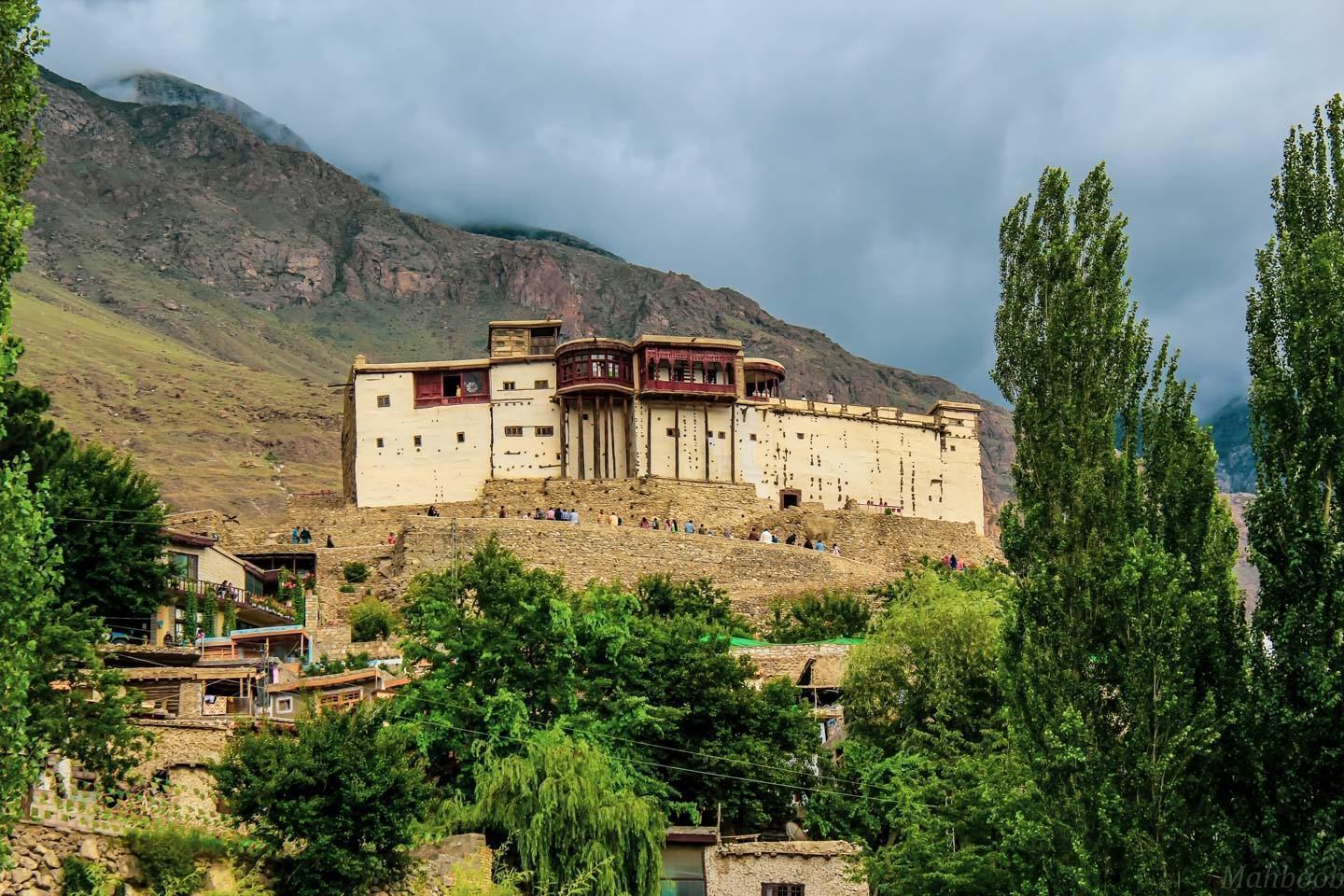
Nestled in the heart of Pakistan’s breathtaking Hunza Valley, Baltit Fort is a testament to the region’s rich history and cultural heritage. This stunning fort, with its majestic wooden architecture and panoramic views, offers visitors a unique glimpse into the past while providing a gateway to the natural beauty of the surrounding landscape.
A Glimpse into History
Baltit Fort dates back over 700 years, originally built as a defensive structure to protect the local population. It was the residence of the ruling Mirs of Hunza until the mid-20th century. The fort’s design showcases a blend of Tibetan and Central Asian influences, reflecting the diverse cultural tapestry of the region. In 1993, it underwent extensive restoration, making it a significant site for history enthusiasts and casual visitors.
Architectural Marvel
As you approach the fort, you’ll be captivated by its distinctive architecture. The intricate wooden balconies, colorful frescoes, and robust stone walls create a striking visual appeal. The fort is built on a hillside, which adds to its charm and offers stunning views of the surrounding peaks, valleys, and the picturesque Hunza River.
A Journey Through Time
Once inside, you can explore various rooms and halls that were once occupied by the ruling family. The museum within the fort showcases artifacts, traditional clothing, and tools used by the locals, providing a deeper understanding of the region’s heritage. Each room tells a story, making your visit a journey through time.
Breathtaking Views
One of the highlights of visiting Baltit Fort is the breathtaking panoramic views it offers. The fort overlooks the vibrant landscapes of Hunza Valley, with terraced fields, orchards, and the majestic Rakaposhi and Ultar Sar mountains in the background. Be sure to bring your camera; the vistas are simply unforgettable.
Cultural Significance
Baltit Fort is not just a historical site; it is a cultural hub for the community. Throughout the year, various cultural events and festivals are held here, showcasing local music, dance, and art. Engaging with the local people and participating in these events can enrich your experience and provide insight into the traditions of the Hunza Valley.
Tips for Visiting
- Best Time to Visit: The ideal time to explore Baltit Fort is from April to October, when the weather is pleasant, and the landscape is lush and vibrant.
- Getting There: The fort is easily accessible from Karimabad, the main town in Hunza. You can either hike up the hill or take a short drive.
- Guided Tours: Consider hiring a local guide who can provide in-depth knowledge about the fort’s history and significance.
Conclusion
Baltit Fort is more than just an ancient structure; it is a symbol of the enduring spirit of the Hunza Valley. Its historical significance, architectural beauty, and stunning natural surroundings make it a must-visit destination for travelers exploring Pakistan. Whether you’re a history buff, a photography enthusiast, or simply seeking to connect with nature, a visit to Baltit Fort will leave you with lasting memories and a deeper appreciation for this enchanting region. So pack your bags and embark on a journey to this extraordinary fort—you won’t be disappointed!
About Author
Zeeshan Alam
The writer is a co-founder of Grey Matter Ventures. He works as an account manager, helping to build strong client relationships. In his free time, he enjoys freelance work and graphic design. He is also passionate about social work and spends time helping his community.
Arts, Culture & Heritage
Altit Fort Hunza: A Must-Visit Destination in Pakistan
Published
1 year agoon
October 7, 2024By
Zeeshan Alam
Altit Fort Hunza is a hidden gem in the heart of the Hunza Valley, Pakistan. This ancient fortress, dating back to the 11th century, offers a captivating blend of history, architecture, and natural beauty.
This is an ancient fort in the Altit town in the Hunza valley in Gilgit Baltistan, Pakistan. It was originally home to the hereditary rulers of the Hunza state who carried the title of ‘Mir‘, although they moved to the somewhat younger Baltit fort nearby three centuries later. The Fort and in particular the Shikari tower is around 1100 years old, which makes it the oldest monument in the Gilgit–Baltistan. The fort has received the UNESCO Asia Pacific Heritage Award for Cultural Heritage Conservation in 2011.

Why visit Altit Fort Hunza?
- Historical Significance: As one of the oldest surviving monuments in the Hunza Valley, Altit Fort provides a glimpse into the region’s rich past.
- Architectural Marvel: The fort’s intricate woodwork, carved balconies, and beautiful murals are a testament to the craftsmanship of its builders.
- Panoramic Views: Perched on a hilltop, Altit Fort offers breathtaking vistas of the Hunza Valley and surrounding mountains.
- Cultural Experience: The fort serves as a museum, showcasing artifacts and traditions of the Hunza people.
- UNESCO World Heritage Site: Its recognition as a UNESCO World Heritage Site highlights its cultural and historical importance.
Tips for Visiting:
Best Time to Visit: Spring (March-May) and autumn (September-November) offer the most pleasant weather for visiting.
How to Get There: You can reach Altit Fort by trekking from Karimabad or hiring a taxi.
Entrance Fee: There is a small entrance fee to enter the fort.
Things to Do: Explore the fort’s chambers, visit the museum, and enjoy the panoramic views.
Don’t Forget: Bring a camera to capture the stunning scenery and architecture.
Here are some additional photos:


This fort is a must-visit destination for anyone traveling to Pakistan. Its historical significance, architectural beauty, and cultural richness make it a truly unforgettable experience.
About Author
Zeeshan Alam
The writer is a co-founder of Grey Matter Ventures. He works as an account manager, helping to build strong client relationships. In his free time, he enjoys freelance work and graphic design. He is also passionate about social work and spends time helping his community.
Tourism
Panel Discussion on Community-Centric Tourism in Hunza on World Tourism Day
Published
1 year agoon
September 27, 2024By
Imran Ali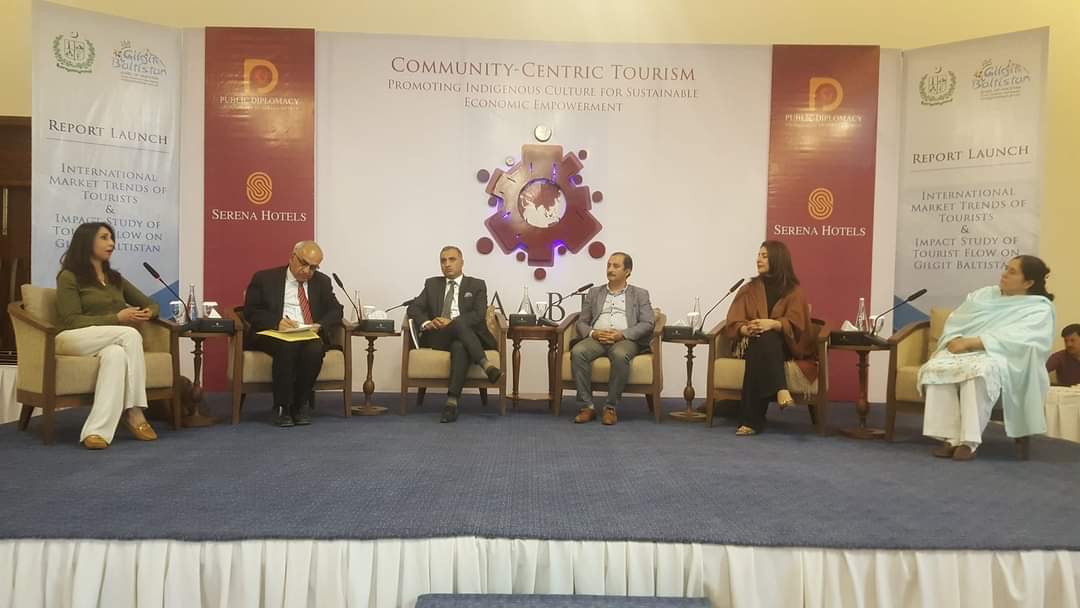
On World Tourism Day 2024, a significant panel discussion was held in Hunza, Gilgit-Baltistan, to explore the potential of community-centric tourism as a driver for sustainable economic development and cultural preservation. Experts, government officials, and industry leaders convened to discuss strategies for empowering local communities through tourism initiatives.
A significant panel discussion titled “Community-Centric Tourism: Promoting Indigenous Culture for Sustainable Economic Empowerment” was held at Serena Hotel, Hunza. The event brought together experts, government officials, and industry leaders to explore how community-centric tourism can preserve cultural heritage and foster sustainable economic empowerment in Gilgit-Baltistan.
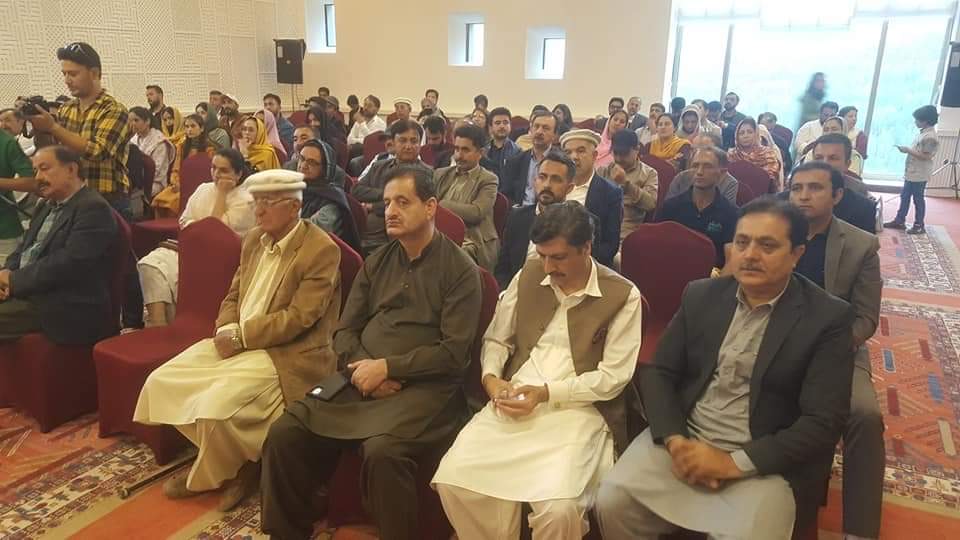
The discussion highlighted the potential of local traditions and crafts as tourism drivers, helping to preserve Indigenous culture while creating economic opportunities for local communities. Lal Bano, one of the panelists and Manager of Karighar, highlighted how community-focused initiatives empower local artisans, especially women, by providing platforms to showcase their crafts and preserve traditional skills. Her insights emphasized the vital role these programs play in fostering economic independence and cultural preservation.
Zameer Abbas, Secretary of Tourism, Sports & Culture, Gilgit-Baltistan, emphasized the government’s role in supporting sustainable tourism, outlining initiatives that encourage cultural preservation while boosting tourism opportunities. He stressed the importance of public-private partnerships to ensure long-term benefits for local communities.
The event also focused on the challenges of promoting sustainable tourism in mountain regions. Raja Ali Anwar Khan, General Secretary of the Gilgit Baltistan Association of Tour Operators, offered insights into responsible tourism practices that protect the environment and benefit local populations economically.
Prof. Dr. Attaullah Shah, Vice Chancellor of Karakoram International University, added academic perspectives, emphasizing the role of education in promoting sustainable tourism models that balance environmental, cultural, and economic goals. His input underscored the need for a well-rounded approach to tourism development in the region. The panel discussion concluded with several key takeaways, including the need to preserve indigenous culture as a core tourism component and strategies to empower local communities through tourism-related opportunities.
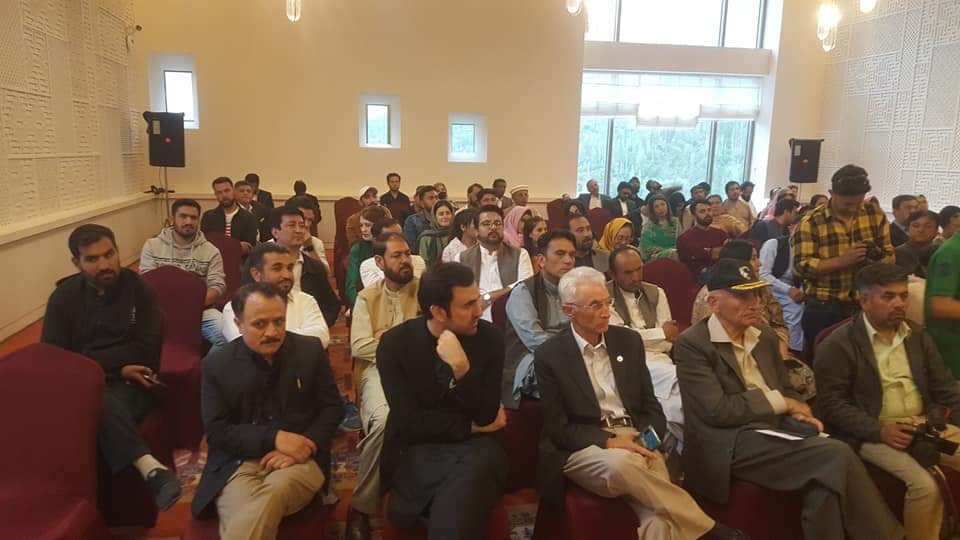
Recommendations were made for stronger collaborations between the government, the private sector, and local communities to support sustainable tourism practices in Gilgit-Baltistan. By focusing on local communities, promoting indigenous culture, and adopting responsible practices, tourism can contribute to the region’s long-term prosperity.
About Author
Imran Ali
The writer is the Founder & CEO of The Karakoram Magazine. Additionally, he is a nuclear scholar fellow at the Centre for Security Strategy and Policy Research (CSSPR) and can be reached at aleee.imran@gmail.com.

Muhammad Azeem Khan: Pakistan’s Number One Amateur Featherweight MMA Fighter

A Drop for a Click: The Silent Cost of Our Digital Thirst

10 Places to Visit in Hunza – Stunning Natural Wonders You Can’t Miss
Latest
-

 Arts, Culture & Heritage2 years ago
Arts, Culture & Heritage2 years agoTraditional women’s dresses of Gilgit-Baltistan
-

 Tourism3 years ago
Tourism3 years agoThe Ultimate Travel Guide to Gilgit-Baltistan: Land of the Mighty Mountains
-

 KIU Corner2 years ago
KIU Corner2 years agoA Guide to LMS KIU Student Login – KIU
-
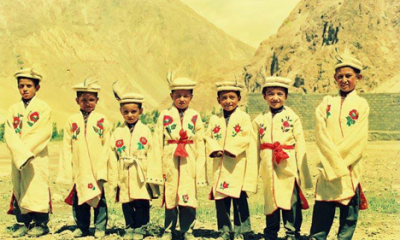
 Arts, Culture & Heritage2 years ago
Arts, Culture & Heritage2 years agoShuqa Simple but amazing winter clothing of Gilgit-Baltistan
-

 KIU Corner2 years ago
KIU Corner2 years agoEmbracing Challenges: Gul Rukhsar’s Remarkable Journey
-

 Opinion3 years ago
Opinion3 years agoThe Constitution of Pakistan: 50 Years of History, Significance, and Challenges
-

 Arts, Culture & Heritage3 years ago
Arts, Culture & Heritage3 years agoQuroot: A Nutritious and Flavorful Staple of Gilgit-Baltistan’s Cuisine
-
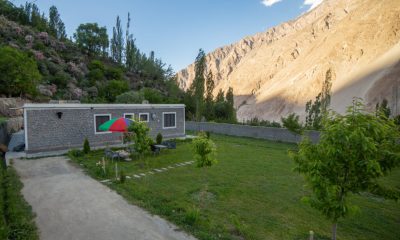
 Arts, Culture & Heritage2 years ago
Arts, Culture & Heritage2 years agoTraditional houses Gilgit-Baltistan



